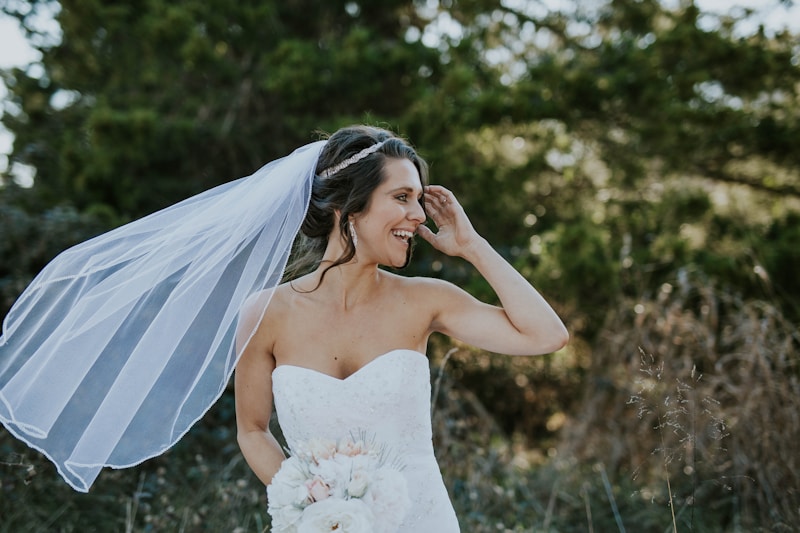Ultimate Guide to Bridal Size Conversion Charts: Finding Your Perfect Fit
Understanding Bridal Size Conversion Charts
Choosing the perfect wedding dress is a dream for many brides-to-be. However, navigating through bridal size conversion charts can often be confusing, especially when considering different sizing standards across various countries. This comprehensive guide aims to demystify bridal size conversions and help you find the perfect fit for your special day.
What Are Bridal Size Conversion Charts?
Bridal size conversion charts are tools that help brides-to-be convert their standard dress sizes from one sizing system to another. Different regions have varying sizing conventions, which can make selecting a wedding dress quite challenging. For example, a size 8 in the United States may correspond to a size 12 in the UK. Understanding these differences is crucial to ensuring the right fit.
Why Do Size Conversions Matter?
Whether you're shopping online or in-store, being aware of size conversions can save you time and frustration. A misjudgment in size can lead to dresses that do not fit properly, which can add stress to what should be a joyous occasion. Utilizing bridal size conversion charts allows you to compare sizes accurately, thus avoiding any unwarranted surprises when your dress arrives.

Bridal Sizes Across the World
Here’s a look at some common bridal size conversions between regions:
| US Size | UK Size | European Size | Australian Size |
| 2 | 6 | 34 | 6 |
| 4 | 8 | 36 | 8 |
| 6 | 10 | 38 | 10 |
| 8 | 12 | 40 | 12 |
| 10 | 14 | 42 | 14 |
| 12 | 16 | 44 | 16 |
| 14 | 18 | 46 | 18 |
| 16 | 20 | 48 | 20 |
As shown in the table above, there are distinct differences between the sizes across various regions. This information is particularly useful when shopping from international boutiques or ordering dresses online from other countries. Also, remember that each brand may have unique sizing, so always check their specific size charts.
Tips for Accurate Size Conversion
Measure Yourself
Taking your measurements accurately is the first step in finding the right bridal size. Here are three critical measurements to take:
- Bust: Measure around the fullest part of your bust while wearing a bra that fits well.
- Waist: Measure around the smallest part of your waist, typically just above your belly button.
- Hips: Measure around the fullest part of your hips while standing with your feet together.
Refer to the Size Chart
Once you have your measurements, compare them with the size chart of the brand you’re interested in. This will provide a clearer picture of how your measurements translate into their size listings.
Consider the Dress Style
Different dress styles may fit differently due to varying cuts or fabrics. For instance, a mermaid style might fit tighter around the hips compared to an A-line cut. Keep in mind the style you select when determining your size.
Common Questions About Bridal Size Conversion
1. What if I’m between sizes?
If your measurements fall between two sizes, it’s generally advisable to select the larger size. You can always have the dress tailored down to fit perfectly.
2. How can I ensure I get the right fit when ordering online?
To increase the chances of a successful fit, always check the return policy before placing an order. Taking your measurements and consulting the bridal size conversion charts will significantly aid in this process.
3. Can I rely solely on size conversions from different charts?
While size conversion charts are beneficial, they should not be the only factor you rely on. Each brand has its nuances in sizing, so always consider trying on dresses or looking at customer reviews related to fit.
Bridal Fitting and Alterations
Once you receive your dress, you’ll likely need some fittings and alterations. Here are a few tips to keep in mind:
- Schedule fittings early: Allow enough time for alterations before your big day.
- Bring the right undergarments: Wear the lingerie and shoes you plan to wear on your wedding day during fittings to get the best assessment of the dress fit.
- Communicate with your tailor: Be open about any concerns regarding the fit and style to ensure you’re satisfied with the final adjustments.
Summary and Final Thoughts
Bridal size conversion charts can be a game-changer when it comes to finding your dream wedding dress. By understanding size differences across various regions and brands, conducting accurate measurements, and being mindful of dress styles, you can significantly increase your chances of a perfect fit. Remember to take the time for fittings and alterations, as this is essential to ensure your bridal gown complements your unique body shape perfectly. Happy dress shopping!